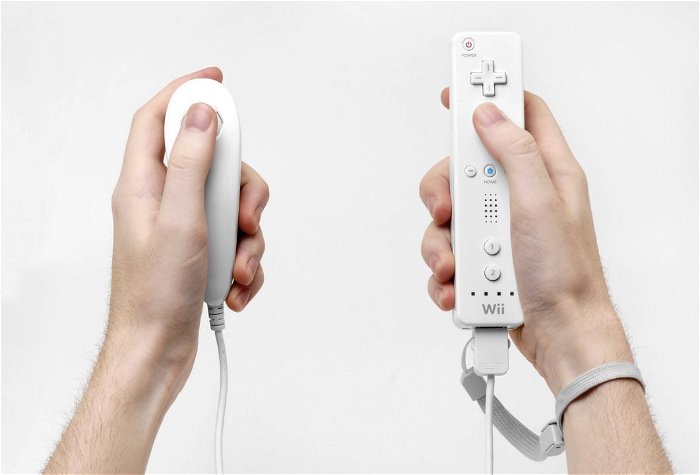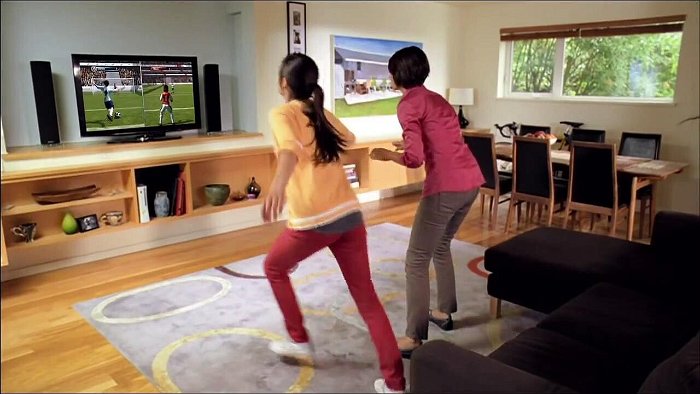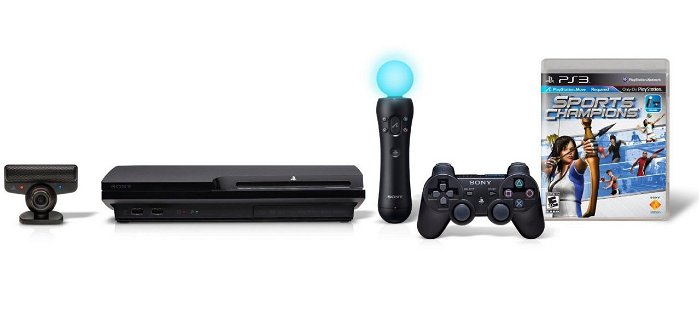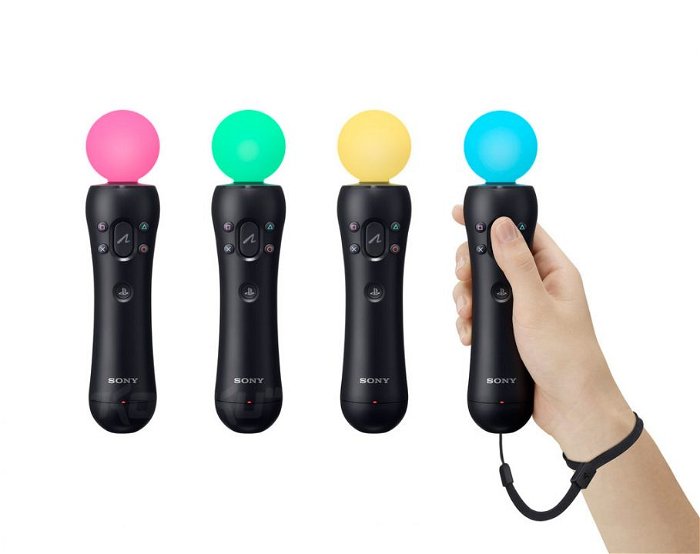By the end of 2010, all three major consoles will have one thing in common; they will offer some form of motion control.
Nintendo struck the first blow in 2006 with the debut of the Wii and four years later, Sony and Microsoft have both retaliated with motion control systems of their own. There’s a lot at stake here, as the market for video games moves beyond the hardcore and into the elusive mainstream audience that Nintendo first made in-roads to with their DS. But this kind of radical success comes at a cost; both in the changes demanded by the industry to support such new technology and design philosophy and in an audience that now finds itself flooded similar products.
In the same way that gamers once found themselves with a plethora of fighters, first person shooters and rhythm games, the same onslaught is about to begin with the interfaces used to interact with games. Is this recent movement towards motion controls a legitimate evolution in the design and technology of gaming? Or is the market looking at a trend that is about to over-saturate audiences with a novelty that is already losing its appeal?
To even attempt to answer that question, it’s best to look at what each console manufacturer is offering, and how they differentiate themselves from the competitors.

Nintendo’s Wii
The Wii is, of course, the one that started it all. The year before its launch, the Wii was a radical dark horse with the first standard motion control system, and was largely regarded by the press and industry analysts as a novelty that would be lucky to hold its own against Sony and Microsoft. Now in 2010, the Wii continues its fourth consecutive year as the market leader, with a “passing fad” that has dominated sales almost every single month since its release.
Of the three interfaces, the Wii is the only system that offered motion control as standard feature from launch. Being first out of the gate did come at a price, that being that the motion control technology sported by the Wii is probably the least sophisticated of the three. However, the Wii has set the precedent for motion control, providing a simple, family friendly experience that has engaged the public consciousness in ways that traditional hardcore games and interfaces haven’t matched. The Wii is the standard bearer for motion controls and it has set the bar that the other two companies are looking to raise.
The Wii’s technology is less robust when compared to its competitors. An infra-red motion sensor bar is affixed to a prominent position, usually right on top of the television, and detects signals emitted by the Wii-mote combined with accelerometer data to pin-point the position of the Wii-mote in space. This has resulted in a rudimentary form of motion control that is closer to “gesture detection” than true motion control as the Wii could only detect broad, basic movements. This resulted in many Wii games incorporating gestures that have now come to be known derisively in the industry as “Wii Waggle” where actions taking place on screen are interpreted through simple flicks of the controller, rather than a round house punch actually requiring the real world motion to be executed.

This deficiency has resulted in a large number of games incorporating extraneous motion control features that don’t significantly contribute to gameplay, though Nintendo itself has wisely confined the majority to its motion control features to short term play such as the “party game” genre of Wii Sports where different motion mechanics are utilized in short bursts, or the level manipulation mechanic occasionally used in New Super Mario Bros. Wii. It is a weakness of the system that Nintendo itself eventually addressed with Wii MotionPlus in 2009, an additional module that plugs into the end of a Wii-mote adding gyroscopes to the array of sensing and giving the Wii much more accurate motion detection. As of May this year, Wii MotionPlus is now being packed as a standard feature of all new Wii consoles at stores. This not only considerably increases design possibilities for gaming, but makes the console more competitive, especially in light of what the other manufacturers are promising gamers.
Microsoft’s Project Natal
At the time of this writing, Microsoft’s motion sensing interface still doesn’t have a proper name and is going by the project codename first revealed at last year’s E3. Celebrity director Steven Spielberg came on the stage and said “What Microsoft is doing not about re-inventing the wheel, so much as no wheel at all,” echoing statements made by Microsoft that with Project Natal, “You are the controller.”
The philosophy behind Natal is radically different from either Sony or Nintendo’s approaches. Feeling that any kind of traditional controller is too intimidating and a barrier to mainstream acceptance, Natal uses a barrage of sensors to detect voice, face and body movements without the use of any peripheral save the Natal sensor itself. This has potential applications in gaming and interface solutions such as issuing verbal orders to characters, using hands to move windows and panels in virtual space, similar to the much talked about interface seen in Spielberg’s own Minority Report.

Unfortunately, Natal is also a largely unknown quantity at this point, with very little in the way of actual games or other applications to show the true extent of its capabilities. Microsoft has been very careful about presenting marketing videos showing off Natal as a video conferencing application where girls can gesture to show off different virtual clothes while they talk to each other. They have also shown off a concept for an artificial intelligence called “Milo” who responds to human conversation and interacts with the players through a variety of face and gesture recognition systems, but no actual games or genuine “productivity-ware” have actually been shown to the public.
The actual performance of the technology is also largely unknown at this point. Early access to Natal by the media has revealed a system that is prone to noticeable “lag” where the movements of the player are not immediately detected and interpreted by Natal, causing a delay in reaction times between input and result. Microsoft has already addressed this by claiming that all Natal access thus far has been with earlier iterations of the technology and is not representative of the final retail product.
But questions of technology aside, the real question that remains to be answered is how Natal will be incorporated into gaming, if indeed, it can be at all. As an attempt to capture the mainstream audience that is currently monopolized by the Wii, Project Natal must convince an audience that already regards the Xbox 360 as a “hardcore gamer’s heaven” that the investment in a whole new console is a worthwhile consideration.

Obviously, like Nintendo, Natal will have immediate applications as an interface for party games, but if Natal cannot extend its usefulness beyond this genre, it finds itself in danger of being more a novelty than the Wii was initially thought to be at launch. It’s hypothesized that the facial and voice recognition features can be used to enhance the traditional hardcore gaming experience, but there’s a lot of doubt within the industry itself that a “controller-less interface” will actually be a viable way to maintain the precision and prolonged stretches of active gaming that constitute conventional hardcore gaming.
After all, if a traditional multi-player session of Modern Warfare 2 can last all night, could Natal reasonably replace a standard control pad and demand that players actually jump, duck and maintain the equivalent of an aerobic workout for several hours straight?
While Project Natal has clearly shown much promise as an exotic and alternative means of interacting with games and other applications, the real test will come when actual games and other products are seen. For now, the interface exists as a remarkable piece of technology with a lot of promise and media buzz, but no concrete examples of the technology in practical use. Project Natal is set for a holiday debut with a rumored release date of October.
Sony’s Playstation Move
If the Wii was the pioneer that made the first, simple inroads to motion control and Project Natal is the upstart contender that takes the concept in a different direction, Playstation Move conservatively sits somewhere in the middle. In essence, Playstation Move could be reduced to a simple “Wii Clone”. The technology uses the existing Playstation Eye camera peripheral, a product that has seen relatively little support thus far, and adds to it an accelerometer controller topped with a multi-color sphere, and an additional “nunchuck” control complement that mimics the Wii’s own Wii-mote/nunchuck set up.

Playstation Move is much more an evolution of the Wii than anything else. The combination of the Playstation Eye camera, inertial sensors, accelerometers, rate sensors and the orb that can light up in different colors all provide a much more precise version of the Wii controller system, though it operates on the same basic concept. Out of the three interfaces, Move is the most accurate in terms of detecting and responding to movement, though once again it runs into the same problem as both the Wii and Natal in that there’s still much debate about the widespread use of the interface, particularly for hardcore games.
Unlike Project Natal, Sony has already showcased a few games that are being readied for the release of Move. But like Nintendo’s Wii, the majority of the games show fairly confined usage of the motion control system. Sony has already revealed Move Party and Sports Champions which both fulfill the role of Wii Sports by providing mini-games for party play.
The Fight: Lights Out is a motion control-based fighting game similar to the Street Fighter series and others in the genre, except that now upper cuts and right hooks will have to be executed in real life. Sony is also going to be patching in Move functionality to existing games, with titles like LittleBigPlanet and Resident Evil 5 slated for compatibility enhanced compatibility with Move, while new games such as SOCOM 4 will be compatible straight out of box upon release.
Like Project Natal, Move offers a new experience, but runs the risk of dividing its audience. The Wii is already the dominant console for motion control experiences and Sony must now contend with both that established audience as well as Microsoft’s Natal for a piece of the motion control pie. Like the Xbox 360, the Playstation 3 is regarded a hardcore gamer’s console, and beyond that, a premium, high end product because of its Blu-Ray functionality and higher price point.

Where Nintendo gave its audience motion controls from day one, Microsoft and Sony face three hurdles. They must convince an existing, largely hardcore audience to invest in still more hardware on top of what they’ve already bought. They must try to convince Wii owners that their new systems are worth the purchase of another console, and they must fight with Nintendo for the remaining market that has yet to purchase a current generation console.
The Future
By the end of 2010, all three companies will have their motion control systems competing in the market, but only in the year or two after will the results be clear. Microsoft and Sony are both playing a game of catch up with Nintendo to appeal to the massive casual audience that they hadn’t considered before. However, it might be a strange case of “too much, too late,” as even Nintendo’s fortunes are changing in 2010. While they are still the leader in terms of sales, for the first time since the debut of the Wii, Nintendo is actually experiencing monthly declines in sales. This could simply be attributed to the market having hit a saturation point where most people that want a Wii have one, or it could be a sign of a general fatigue for motion control games; perhaps the Wii really was a fad that ran for a few years before finally losing public interest. If the case is truly the latter, then both Sony and Microsoft are entering into a game that is almost over.
On the other hand, there is some merit to criticisms about the complexity of traditional hardcore games. The typical first person shooter will use all the available sticks and buttons on a 360 or PS3 controller, which amounts to approximately 13 individual inputs. The Wii captured the imagination of the non-gaming public precisely because the control was intuitive; swing a controller like a golf club to play golf, arc the controller upwards to throw a bowling ball.
Nintendo proved, however temporarily, that the mainstream audience is willing to embrace a game console if they don’t have to learn an entire new subset of reflexes and skills to do it. All three of these consoles now offer this alternative, although Natal is probably the most interesting and futuristic of all if it can really get users to talk and gesture to their console and receive responses like a computer straight out of a scene from Star Trek. All of the companies are offering improved versions of the initial Wii motion control system this year, although only Nintendo is making it a standard feature in future releases of their console.
Thus far, motion control hasn’t really moved past the novelty phase as even most users of the Wii end up ignoring their console once the novelty of Wii Sports or Wii Fit has worn off. It can all change if one of the manufacturers can finally come up with a good idea for motion controls that manages to integrate the technology in a fundamental but compelling way.
A generation of motion control proliferation is almost here, and with it, two more companies devoting resources to using the technology. Hopefully one of them will finally hit on the necessary mix of fun, engagement and lasting appeal that will be required for these interfaces to move into a more prominent, useful position on their respective consoles.





